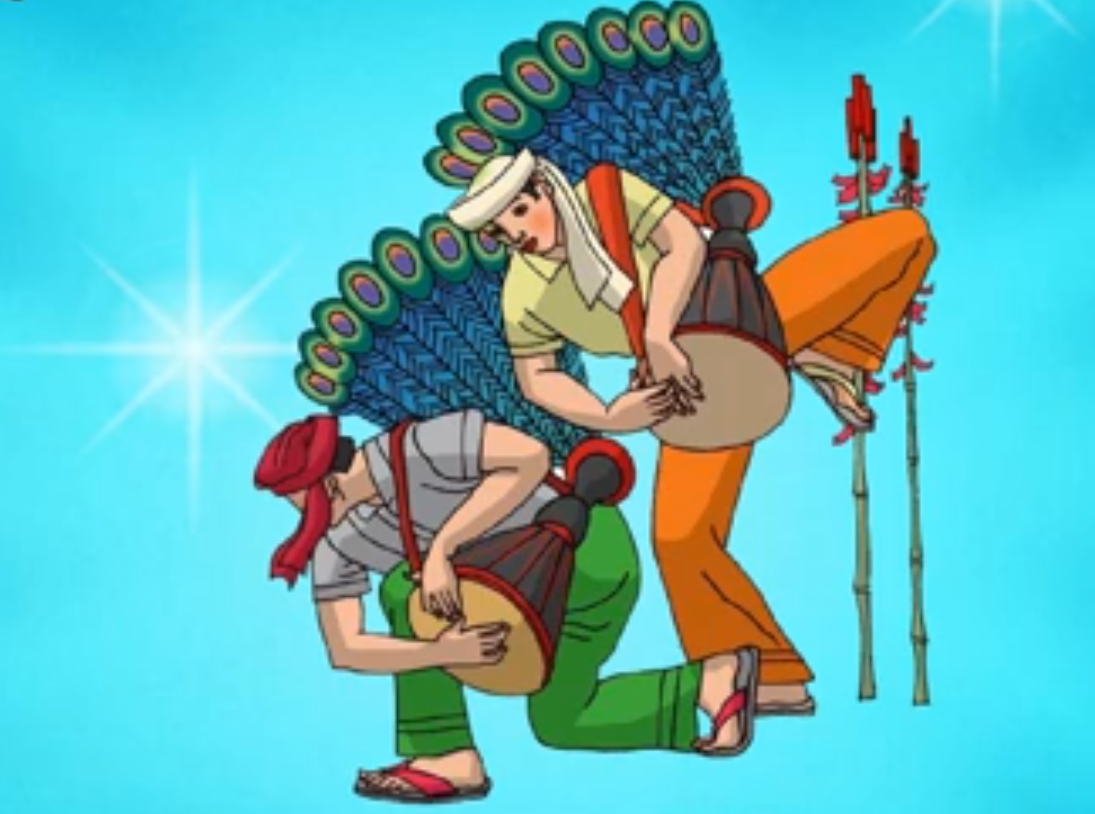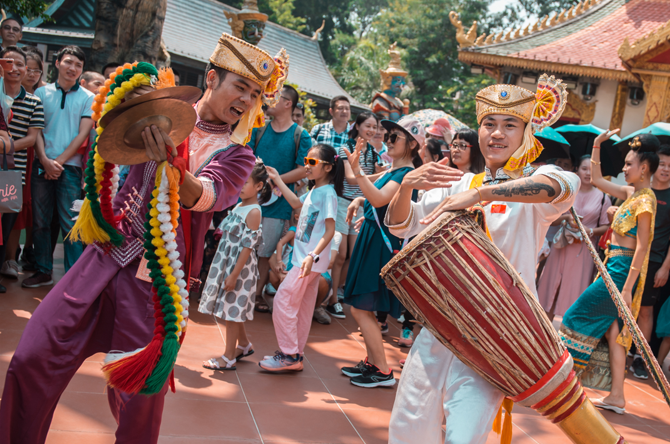Guangya's way of playing
130 views · Organized by 左树 on 2022-02-14
When playing, the drum belt is slung over the shoulder, the drum body is placed diagonally on the left hip, the drum face is forward and high, the drum tail is facing the ground, the center of gravity is on the right foot, the left foot is slightly bent, and the toes are on the ground. The body leans slightly to the right.
Hold the edge of the drum frame with your left hand, beat the drum face alternately with food, middle, nameless, little finger and right hand, and beat the drum with your right hand with a half-clenched fist. Playing methods include forebeat, dull beat, finger beat (with one finger), palm beat and boxing.
In the old days, Guangya mainly tapped in Theravada Buddhist monasteries for religious affairs, but only tapped but not danced. Later, it was spread among the people, and the form of dancing while playing appeared, but it was only performed by the performer alone. Because the drum is too heavy, Guangya does not play it alone. It is often combined with cymbals and cymbals to perform various folk dances such as "Peacock Dance", "Red Deer Dance", "White Elephant Dance", "Scarf Dance" and so on. accompaniment.
Hold the edge of the drum frame with your left hand, beat the drum face alternately with food, middle, nameless, little finger and right hand, and beat the drum with your right hand with a half-clenched fist. Playing methods include forebeat, dull beat, finger beat (with one finger), palm beat and boxing.

In the old days, Guangya mainly tapped in Theravada Buddhist monasteries for religious affairs, but only tapped but not danced. Later, it was spread among the people, and the form of dancing while playing appeared, but it was only performed by the performer alone. Because the drum is too heavy, Guangya does not play it alone. It is often combined with cymbals and cymbals to perform various folk dances such as "Peacock Dance", "Red Deer Dance", "White Elephant Dance", "Scarf Dance" and so on. accompaniment.

Involving musical instruments
Guangya (pinyin: Guāng yà), also known as Guangtun, is like a foot drum, which means a long tail drum or a short drum. It is an important folk percussion instrument of the Dai people. It is deeply loved by the Dai family and is widely used in the accompaniment of singing, dancing and Dai opera.
Guess you like
Organized by 小埋 on 2022-02-14
The drum body is slender, with a large head, a thin waist and a flared tail. It can be divided into three parts: drum chest (resonance cavity), drum waist (sound transmission channel) and drum foot (drum tail).
read >>
 渝公网安备 50010702504639号
渝公网安备 50010702504639号